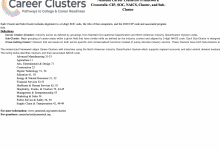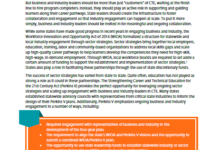This report examines the employer engagement landscape with a particular focus on the ways in which states can foster and sustain meaningful employer engagement to strengthen their CTE systems for all students. States can use this resource to evaluate best practices and strategies for engaging the employer community.
The report drew from a survey of 47 State CTE Directors as well as a dozen interviews to understand how and in what ways employers were engaging with CTE across the country and to illuminate the state’s role in fostering employer engagement. Overwhelmingly, the State Directors reported that employer engagement has increased over the past decade and they expect this growth to continue in the next five years. As the second installment in the “State of Career Technical Education” series, the report also examined the wide range of levers that states are using through state and federal policy.
At the state level, the most common tools used to foster employer engagement include interagency collaboration and pilot initiatives as well as standards development and credentials selection. Via the federal Carl D. Perkins Career and Technical Education Act, states also have the flexibility to levy additional requirements beyond what is detailed in the law for locals seeking Perkins funds. More than 40 states said they require local advisory committees, and another 10 states said they also require locals to incorporate work-based learning, employer-related professional development and/or monetary or in-kind contributions.
Additional examples of strong employer engagement practices from around the country are available here.






